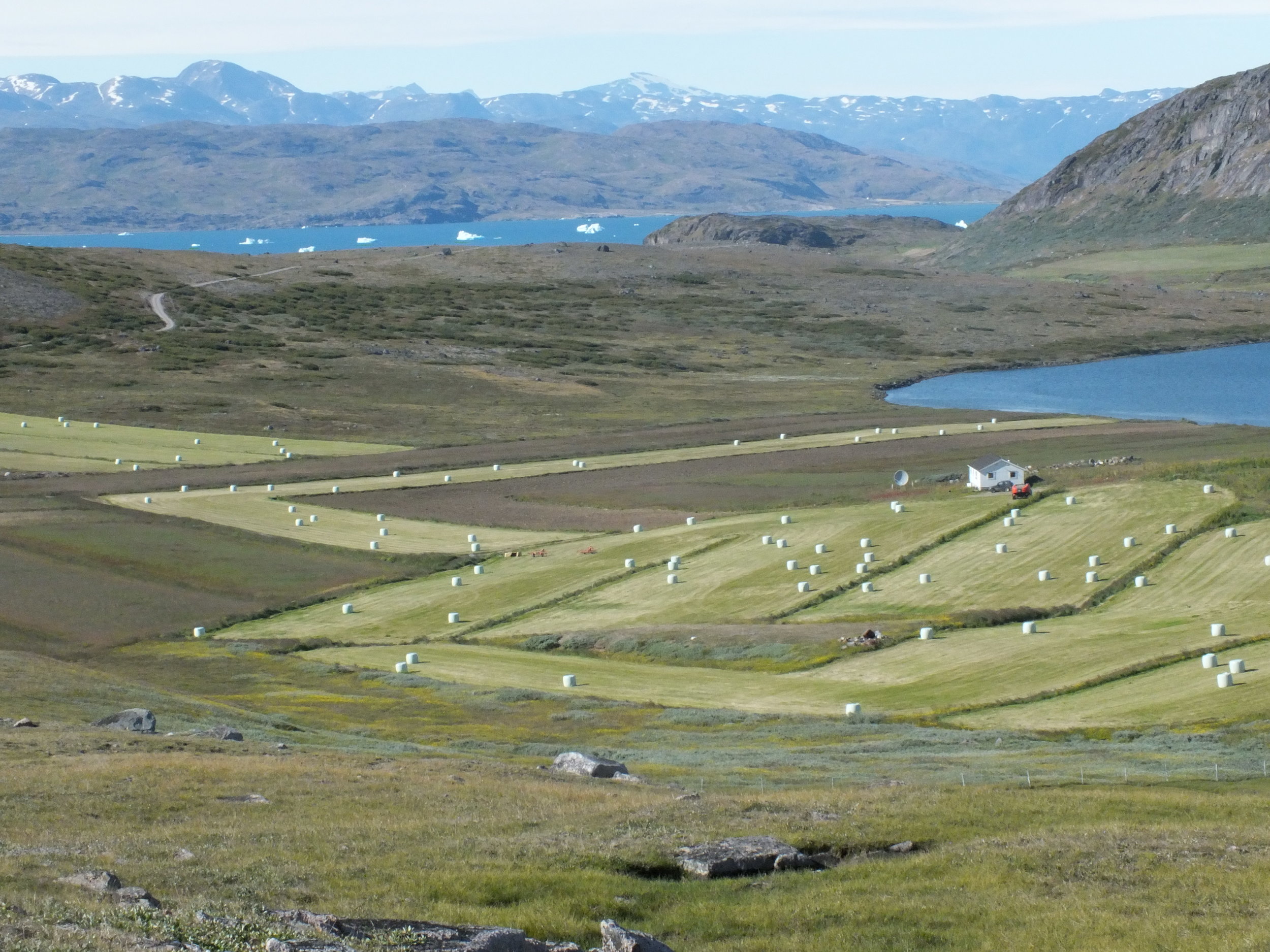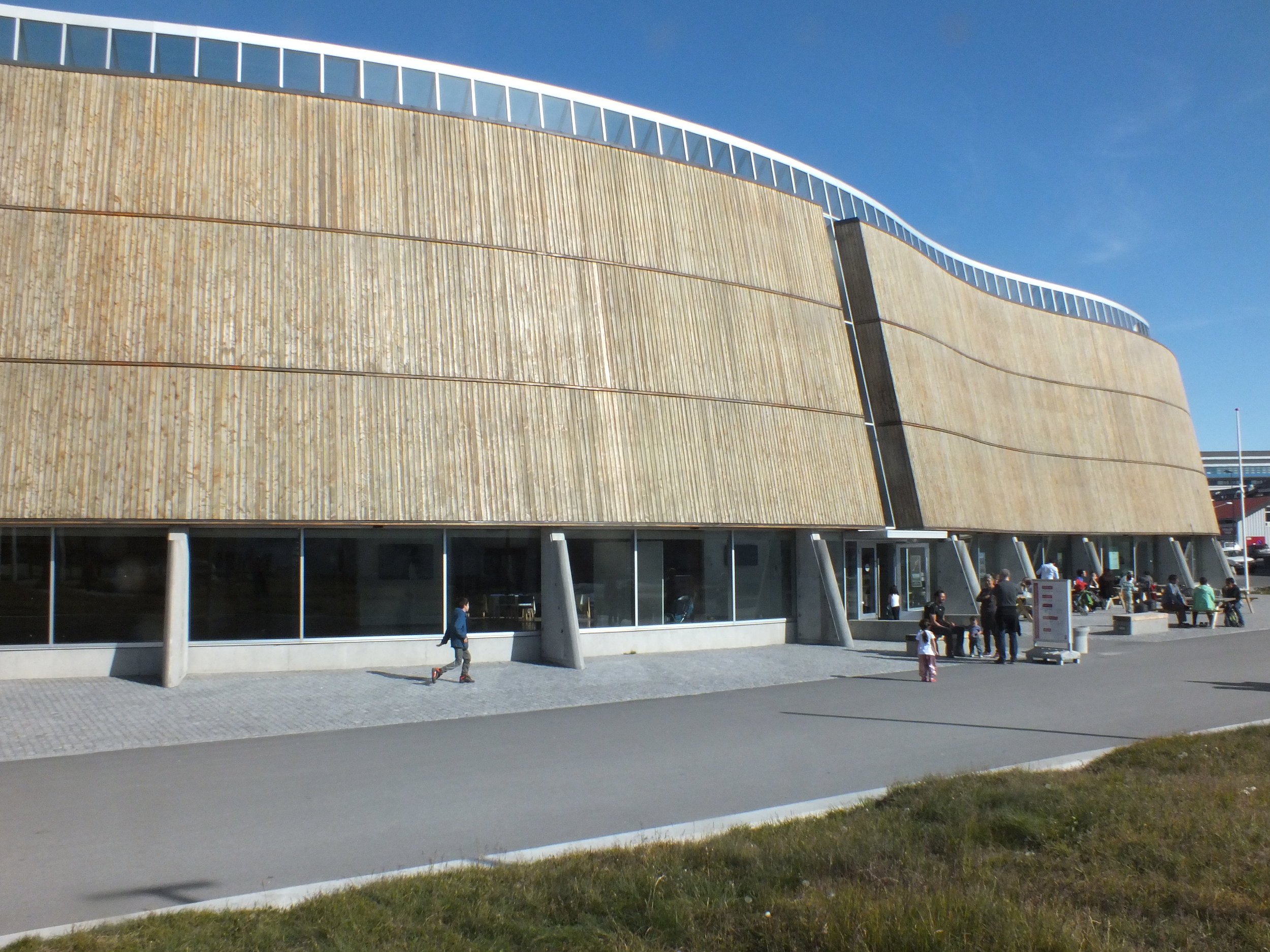Greenland – a land of surprises!
Why go to Greenland? This has been a common comment in conversations, especially from those who don’t know me well, yet it was at the top of my travel list for many years.
Not only was this stimulated by my knowledge of its remoteness, its grandeur, the expanse and depth of its ice cap and the vital role it plays in regulating the global water cycle and climate, but also by an intrigue as to how people can sustain a livelihood in such extreme climatic and remote conditions.
Greenland - crossing the col between Italeq and Igaliku
To fulfil this ambition and gain a better understanding of 'what makes Greenland tick', we visited for three weeks in August 2015. Whilst our anticipatory senses had been heightened in the weeks and days leading up to the journey, we were still amazed, if not overawed on occasions, by what we experienced during our travels, and not just in ways in which we had half–imagined.
It was not just the full magnificence and grandeur of the landscape and scenery that impressed itself upon us, but also…
- the sunny weather that seems to be almost guaranteed during much of the summer. When we arrived at Narsarsuaq airport and met by our 'tour host’, we remarked on the beautiful warm, sunny afternoon and clear blue skies. He remarked, “It’s been like this for over two months now and likely to continue for a while yet”. Getting hot and sweaty in on our hike to Igaliku had not been high on our list of expectations!
- So if you want some guaranteed sun but not so hot as to be virtually unbearable, Southern Greenland seems to be an ideal place to go. These are the benefits of what is regarded as a cold desert climate! This good weather accompanied us for most of our time including at Camp Eqi near the Eqi Glacier, north of Ilulissat, even though temperatures were cooler. The only exception was on the trip across Disko Bay to Qeqertarsuaq, the only community on Disko Island, where it rained consistently, disrupted the ferry boat timetable and delayed our departure. Here it seems the meteorological influences are different and more localised than elsewhere along this stretch of coastline.
- in contrast to many of the small communities we saw travelling north on the ferry up the west coast, Nuuk (pop: 17,316) is not only the capital and home to a third of Greenland’s population, but has all the apparent attributes of a modern, sophisticated European city, complete with roundabouts, a modern urban bus system, underground shopping mall, modern theatre, university and cultural centres with people sitting outside cafes and bars enjoying ‘Friday after work drinks’.
- an opportunity to taste and enjoy musk-ox goulash, reindeer ragout and Arctic cod
has a vibrant music scene that has even been integral to the struggle of Greenland to gain independence or at least extensive autonomy from Denmark. We learnt how the young at one time had to leave Greenland if they wanted to gain a higher education. In 1968 some Greenland students in Paris got together and formed a band, Sumé, who for the first time released new music to an international audience that was sung in Greenlandic. They established a huge fan-base in Greenland, capturing the economic and cultural plight of Greenlandic people at the time and became standard bearers for those who campaigned for independence from Denmark.
- given the pivotal role Greenland's vast ice cap plays in the global water cycle and how it is melting due to climate change, one would think that the mood would be one of supporting all the efforts being made to combat climate change. Indeed while staying in Ilulissat near the Icefjord (the sea mouth of the Sermeq Kujalleq (Jakobshavn) Glacier and declared a UNESCO World Heritage Site in 2004), we learnt that a massive part of the face of the glacier, measuring 12.4 sq km, had calved off. In an instant the glacier had retreated several kilometres up the fjord!
Yet when we travelled over to Qeqertarsuaq on Disko Island, the guide who intended to take us dog sledging had the weather had been kinder, thought climate change was a good thing as it would bring new opportunities and people would be adaptable. Concern for the wider global impact did not seem to trouble him. Whether this was an expression of disdain or the potential of new business opportunities appearing was difficult to tell, but it illustrated that it should never be assumed that even in places where the impact of such global issues is most visible that everybody there would share a similar outlook.
Nuuk Cultural Centre
Change is inevitably coming to Greenland, whether that is enforced by the impact of climate change, approvals granted for extensive mining development or achieving complete independence from Denmark. However, with no interconnecting road system, small isolated communities, and other limited infrastructure like accommodation it will never be able to cater for mass tourism. Sisimiut, the second largest community only has a population of little more than 5,500.
General tip
If you save your pennies, do book at least 6-9 months ahead, and ideally earlier as flights via Iceland, the main route of entry, quickly fill up. The coastal ferry route runs once a week between Qaqortoq in the south west and Ilulissat on the shores of Disko Bay. Think of it more as a comfortable mini-cruise. If travelling northwards, try and book a starboard side cabin, or a port side cabin if sailing south. A visit to Greenland will certainly stay long in the memory and probably challenge a lot of your preconceptions.
A walk to towards the ice flow of the Icefjord, near Ilulissiat





